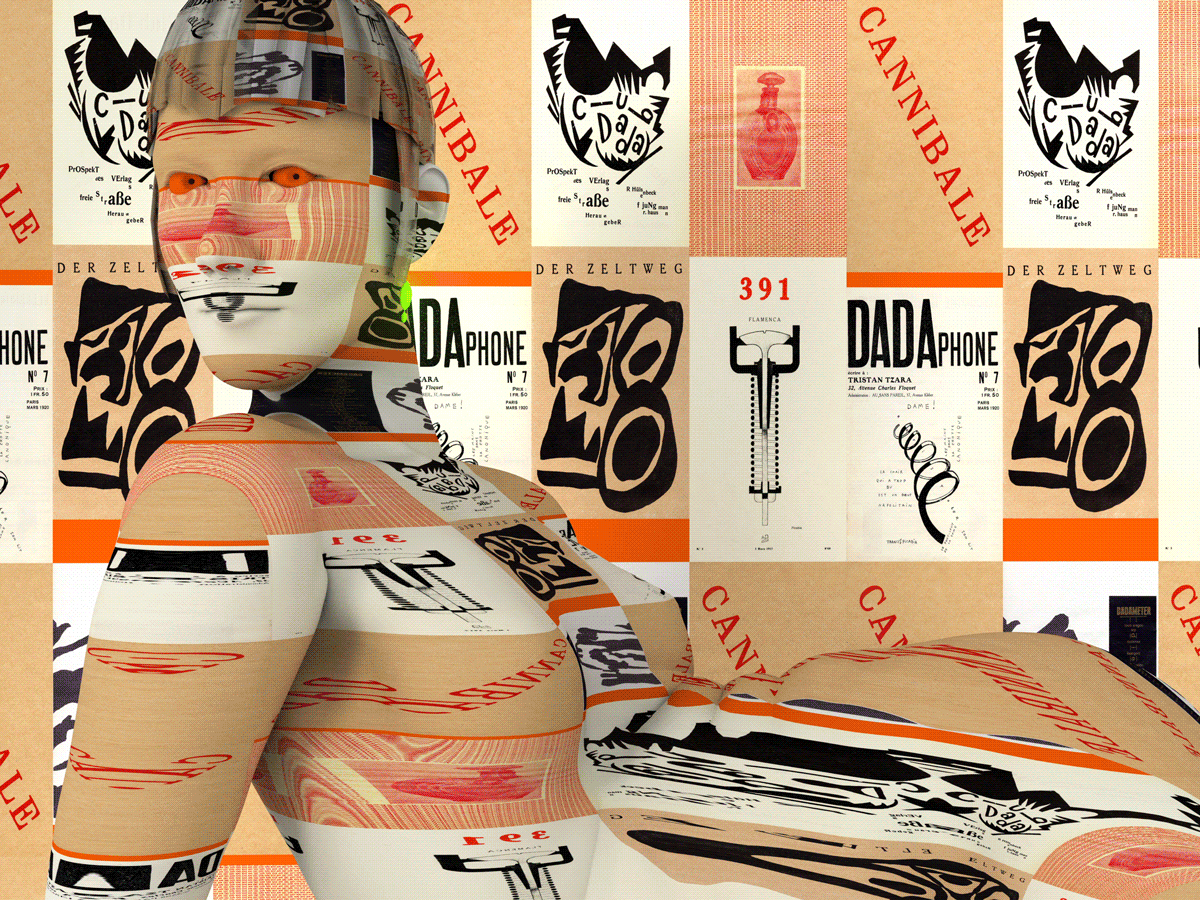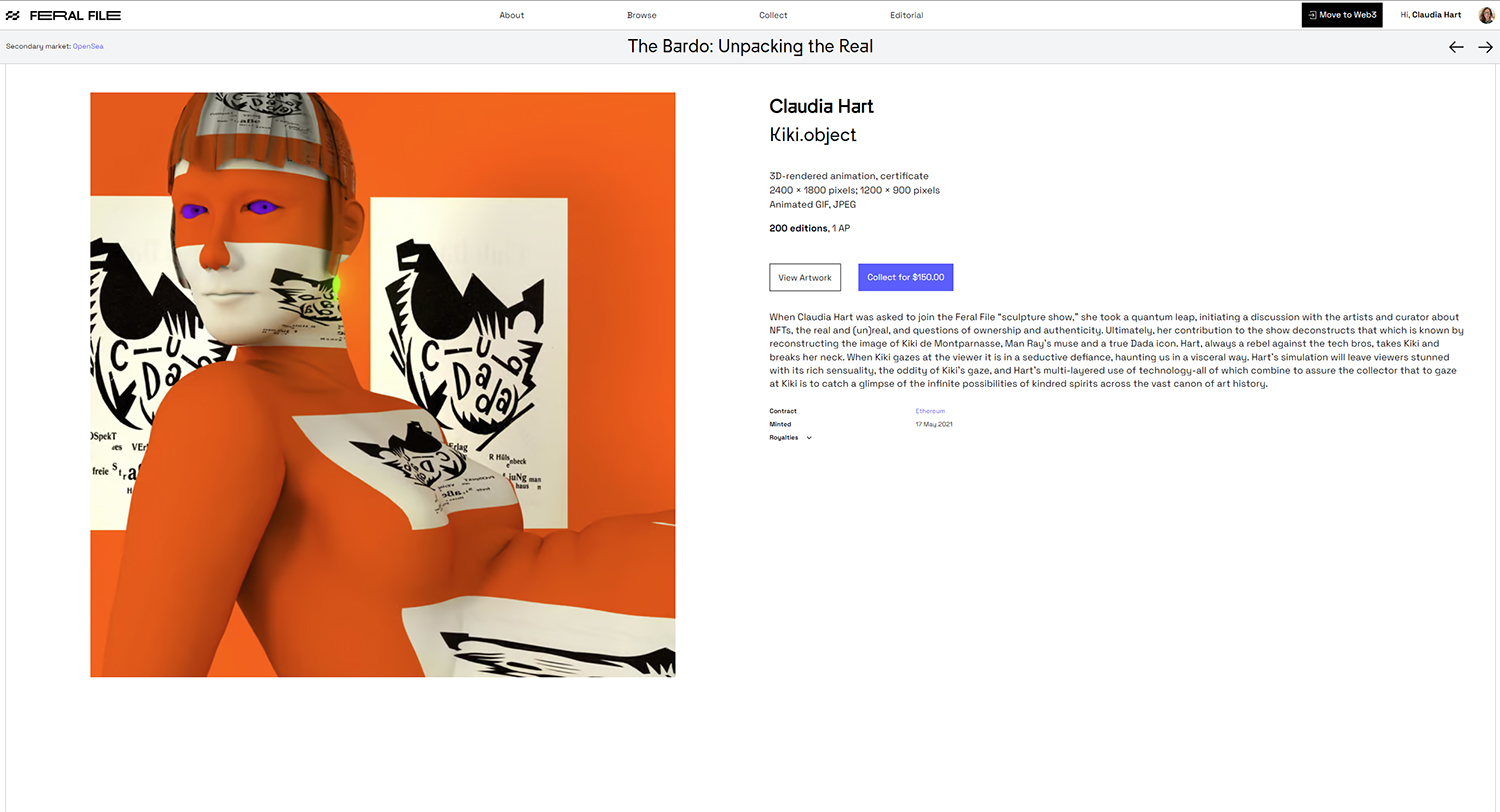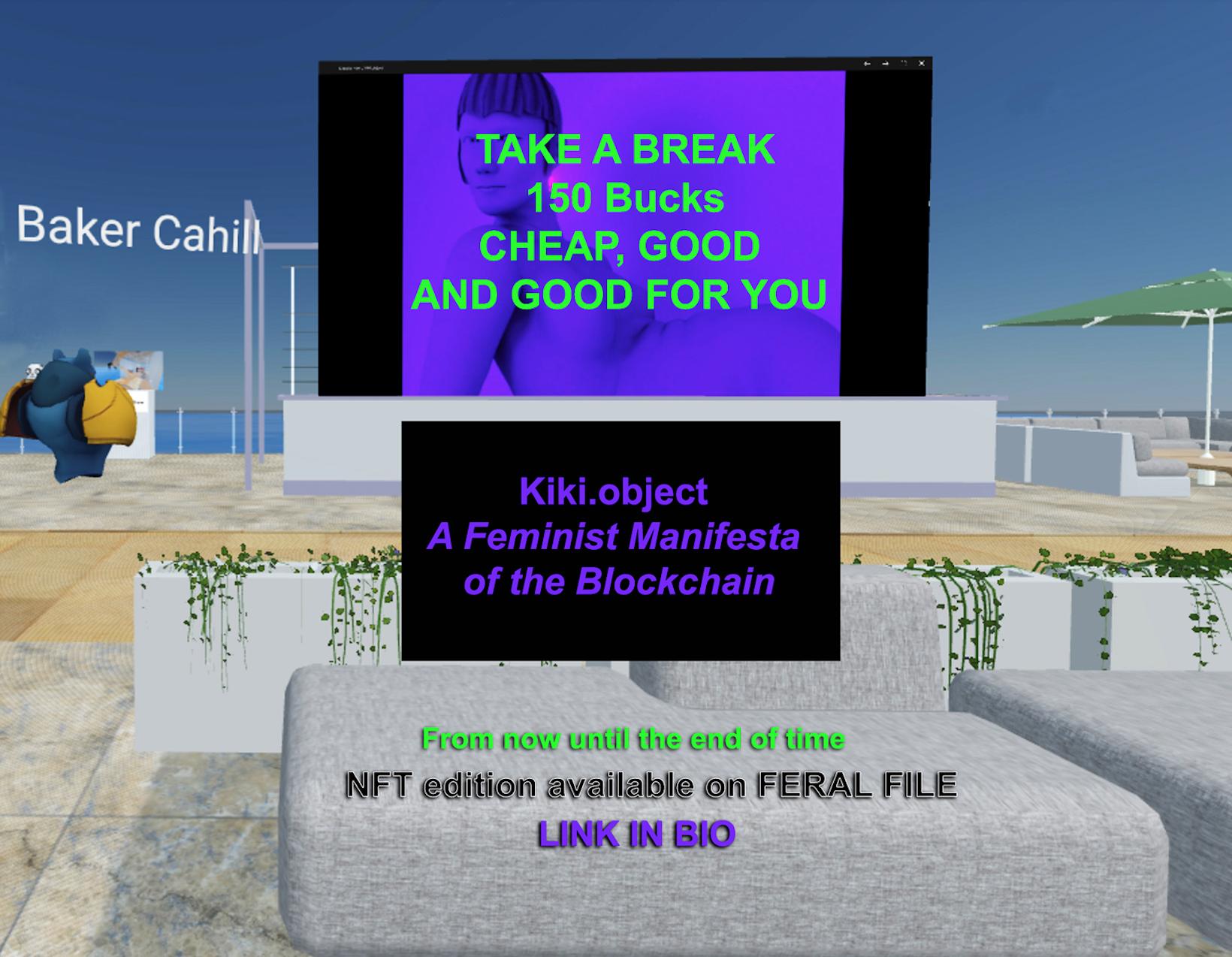
A Feminist Manifesta of the Blockchain (2021)
Manifesta as text + animated gif combined into a single NFT
Hart wrote A Feminist Manifesta of the Blockchain in 2021, and later attached it to the Kiki.Object, a gif that she produced in 2017, as an NFT combined text-and-image package. She was inspired by an earlier piece of NFT art by Eve Sussman, 89 seconds Atomized, produced in 2019 for Snark.art, an early NFT art platform. Following Sussman’s lead, Hart’s intention was to atomize her earlier Kiki work, which could then only be VIEWED by purchasers, though actually stored in a locked box in a secure private, inaccessible Internet location. The Kiki was atomized into 200 shares, available for $150.00 each. Purchasers were given a copy of the Manifesta, and a tokenized ticket, marking their share.
When she wrote her Manifesta, Hart had high hopes for NFT, thinking that they would permit economic and social liberation for the arts and artists. She has since reversed her position. Her Feminist Manifesta of the Blockchain was initially published as a text in Hyperallergic magazine, and later transformed into an NFT on the Feral File platform.






Why We Need a Feminist Manifesta of the Blockchain, Claudia Hart, Hyperallergic, April 2021